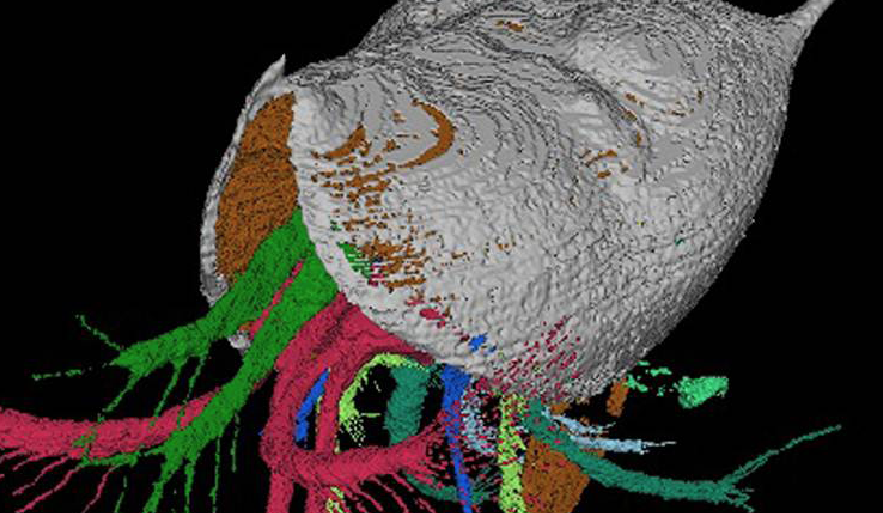Imperial Scientists create model of extinct lung parasite
3D model created by Dr Mark Sutton of Earth Science and Engineering

A 3D model of a 425 million year old fossil of a sea creature has allowed researchers to obtain the first examples of Invavita piratica (invading pirate) an ancient ancestor of a lung parasite called Tung Worm, sometimes found in humans.
The research team from the University of Leicester including Imperial’s Dr Mark Sutton, Department of Earth Sciences and Engineering, produced the model and are using it to gain a much better idea of how Tung Worm has evolved. This specimen is the first adult example of the parasite to be found.
Previously only larvae have been found in rocks from 500 million years ago. This meant that there was on evidence about the life of the adult parasite. The discovery of the adult parasite living on the outside of a sea creature indicates that the species has undergone drastic changes.
The research has been reported in Current Biology, with Dr Sutton reporting: “Fossils like this can genuinely cast light on things that would be otherwise fundamentally unknowable… we now have a much better idea of the evolutionary pathway this parasite took from external to internal.”










